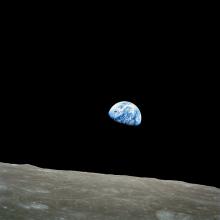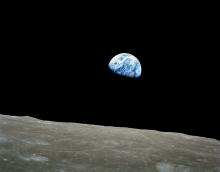Listen to today's episode of StarDate on the web the same day it airs in high-quality streaming audio without any extra ads or announcements. Choose a $8 one-month pass, or listen every day for a year for just $30.
You are here
Bubble Trouble
The Moon has a bright companion tonight. Spica, the leading light of Virgo, is to the right of the Moon at nightfall.
The Moon is waxing toward full early Wednesday, just a few hours after it’s closest to Earth for the month. The combination will produce especially high and low tides.
The tides have many profound effects on Earth and its life. One of them may be influencing how much of a greenhouse gas finds its way into the air.
Methane — the main compound we burn as natural gas — is found in copious amounts on or below the ocean floor. Some of it consists of pockets of gas, and some is frozen. Some of it bubbles to the surface, where it can enter the atmosphere. But methane is a powerful greenhouse gas — it traps far more of the Sun’s heat than carbon dioxide does.
A couple of studies in recent years have found that the amount of methane released from the ocean floor varies with the tides. One study looked at deposits off the coast of Canada’s Vancouver Island. It found that more methane bubbled into the water at low tide than at high tide. And another study, late last year, found similar conditions in the Arctic Ocean, north of Norway.
At high tide, there’s a taller column of water above the methane, so there’s more pressure. One study said that may seal cracks in the ocean floor that allow methane to escape. But at low tide, the pressure is lower, so the cracks open up and the methane bubbles away — released by the Moon.
Script by Damond Benningfield





